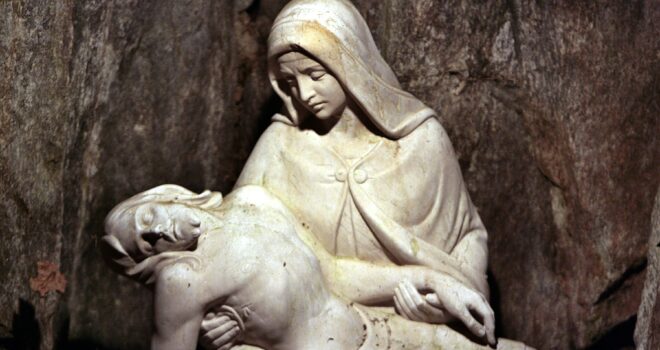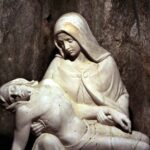Embracing Healing and Hope in the Church
In pondering the timeless words of scripture, “What man among you having a hundred sheep and losing one of them would not leave the ninety-nine in the desert and go after the lost one until he finds it?” (Luke 15:4), one cannot escape the resonance it holds with the narratives of departure from the Catholic […]



In pondering the timeless words of scripture, “What man among you having a hundred sheep and losing one of them would not leave the ninety-nine in the desert and go after the lost one until he finds it?” (Luke 15:4), one cannot escape the resonance it holds with the narratives of departure from the Catholic Church. It is a narrative familiar to many—a friend or family member, perhaps a steadfast presence in the parish, now absent from the pews. As members of the Church, we grapple with a poignant ache, witnessing our fellow brothers and sisters drift away from the Truth.
The profound question emerges: How does one remain connected to the Head without being a part of His Body? It is a question that unravels the intrinsic connection between Christ, the Bridegroom, and the Church, His Bride—a connection characterized by purification and sanctification, as read in Ephesians 5:25-27. The metaphorical imagery of Christ cleansing the Church with water and the word beautifully emphasizes the sanctity and unblemished nature of the marriage union.
Acknowledging the reality of Catholics wounded by members of the Church, be it clergy or laity, prompts a deeper contemplation and is absolutely necessary. Remaining a member of the Catholic Church however is rooted not in the fallibility of its members but in a profound belief in the One, Holy, Catholic, and Apostolic Church—a repository of complete truth. Yet, it is disheartening that those scarred by the actions of fellow believers distance themselves from the sacraments, especially the Eucharist.
Personal testimonies of enduring pain and betrayal within the Mystical Body of Christ evoke a profound juxtaposition. Despite grievous wounds, the unwavering commitment to the Truth and the redemptive sacrifice of Jesus on the Cross becomes a steadfast anchor. It is an intimate acknowledgment of the Father giving His only-Begotten Son for a frail and sinful soul, a recognition that transcends personal suffering.
Despite my own story of heartache my faith remains unshaken. The profound understanding, belief, and acknowledgment of the Truth prevent me from contemplating a departure from the Church. Jesus Christ, my Lord and Savior sacrificed Himself on the Cross to deliver me from the clutch of sin. The Father bestowed His only-Begotten Son upon me—a feeble and fallen soul—allowing Him to endure a heinous death on a tree. This ultimate sacrifice ensures my resurrection alongside Him on the Last Day.
Contemplation deepens as one gazes upon the Sacred Host, a tangible symbol of divine love. The decision to abstain from the Precious Body and Blood of Christ, the source of inner healing, is scrutinized in light of the Father’s unwavering love. The notion of Christ as the Wounded Healer emerges—a transformative force in the midst of personal pain.
I recognize that individuals who have weathered challenging experiences within the Church may find entering a Catholic Church to be emotionally taxing, a feeling that I know all too well. Upon my return to Daily Mass after leaving the religious life due to abuse by religious sisters, the surging of tears became an involuntary response that overpowered me. The mere sight of a religious habit would evoke a compelling impulse to retreat. Nevertheless, maintaining a steadfast focus on the Tabernacle, where my Beloved resided, served as a poignant reminder of my commitment to Him. In moments of profound heartbreak and feeling completely and utterly scandalized by members of the Church, that sacred connection endured.
In considering the path of return for fallen away Catholics, especially those scarred by its members, the contemplative lens unveils a nuanced approach. Support, empathetic listening, and fervent prayers are recognized as essential components of the journey back Home. The responsibility extends to imparting an understanding of God’s boundless love and assuring the wounded souls that Christ patiently awaits their return.
Let us offer a sincere and earnest prayer for those who no longer consider themselves Catholic, particularly those bearing the scars of the Mystical Body of Christ. May the divine timing orchestrate their return, ushering them back into the embrace of the Church—a sanctuary of redemption and grace.
Photo by David Trinks on Unsplash













